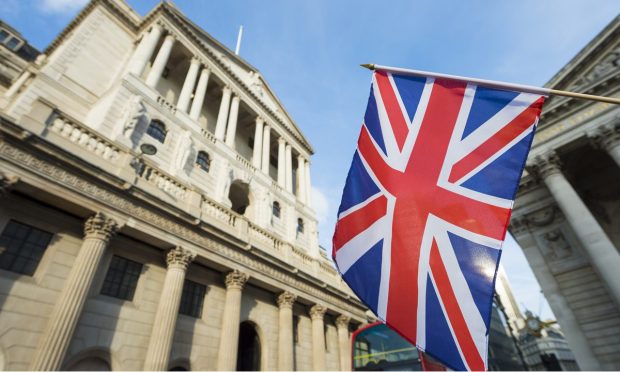UK Big 4 Beef Up Loan-Loss Reserves as Calls for Windfall Tax Intensify

Due to interest rate hikes by the Bank of England (BoE) this year, all four of the largest U.K. banks — HSBC, Barclays, NatWest and Lloyds — have recorded a surge in income, capitalizing on the increase in the difference between what they charge borrowers and what they pay out to savers.
At HSBC, for example, net interest income hit $8.6 billion during the third quarter (Q3) of 2022. And in the nine months up to the end of September, $23 billion was generated from interest alone, up from $19.7 billion during the same time period last year.
In light of banks’ growing interest margin, some British politicians have been calling for financial institutions (FIs) to pay a windfall tax to plug holes in the country’s budget gap — similar to the proposed bill for a 4.8% levy on banks’ net interest income being assessed in Spain.
Read on: Government Unfazed as Multisector ‘Windfall Tax’ Draws Ire of Spanish Banks
Similarly, Sir Charlie Bean, a former deputy governor of the Bank of England, told a Resolution Foundation event Tuesday (Nov. 1) that such a move could potentially raise “tens of billions” of pounds of much-needed tax revenue for the U.K. government.
But whether or not this windfall tax sees the light of day in the U.K., senior executives at the country’s top banks have other pressing issues to address in the short to medium term, particularly increasing loan defaults triggered by the high inflationary environment globally.
See more: Mounting Losses, SMBs and Digital Banking Define UK Big Four Performance in H1 2022
At HSBC, despite reporting a Q3 pretax profit of $3.1 billion above analyst estimates, Group CFO Ewen Stevenson told investors on an earnings call that a weak real estate market in China and a “mild recession” in the U.K. were behind the decision to set aside over a $1 billion for expected loan defaults.
Related: Banks Expected to Boost Loan-Loss Reserves for Third Consecutive Quarter
Likewise, in Barclays’ earnings presentation, Chief Executive C.S. Venkatakrishnan deemed a provision of 381 million pounds ($438 million) for bad loans necessary due to “deteriorating macroeconomic forecast.” In comparison, the figure is more than three times the 120 million pounds ($138 million) Barclays set aside for bad loans during the same period last year.
Falling Prices, Worsening Outlook
While HSBC and Barclays were largely able to balance their above-expected default buffers with increased interest revenue, the same can’t be said for Lloyds.
In fact, the 668 million pounds ($768 million) reserved in anticipation of rising defaults was a significant factor in the 26% decrease in profits the U.K. bank recorded year-over-year, which were well below the 1.8 billion pounds ($2.07 billion) analysts had forecast for the quarter. The earnings miss came despite Lloyds’ net interest margin jumping sharply to 2.98% in the quarter.
The U.K.’s biggest mortgage lender also downgraded its economic forecasts to reflect a worsening outlook, and is now predicting the economy will shrink 1% next year while housing prices will fall 8%.
“So far, at least, our customers are adapting well to cost of living increases that we are seeing,” Lloyds CFO William Chalmers told shareholders, highlighting that the provisions are forward-looking and that “credit charges continue to be at or below historic and pre-pandemic levels.”
NatWest too failed to meet expectations as a result of the significant cost of its loan loss provisions, which amounted to 247 million pounds during the period under review.
“At a time of increased economic uncertainty, we are acutely aware of the challenges that people, families and businesses are facing up and down the country,” NatWest CEO Alison Rose said in an earnings statement.
“Although we are not yet seeing signs of heightened financial distress, we are very conscious of the growing concerns of our customers and we are closely monitoring any changes to their finances or behaviors,” Rose added.
In the end, the fact that the four biggest banks in the U.K. have chosen to prepare for the worst says as much about the off-balance nature of the country’s politico-economic climate as it does consumers’ and homeowners’ current ability to repay their debts.
In fact, in a country that narrowly avoided the collapse of major pension funds at the height of September’s market meltdown, banks are choosing to play it safe and err on the side of caution.
Further reading: Pound Rebounds on New UK Chancellor’s First Day but Import-Export Challenges Remain
For all PYMNTS EMEA coverage, subscribe to the daily EMEA Newsletter.
